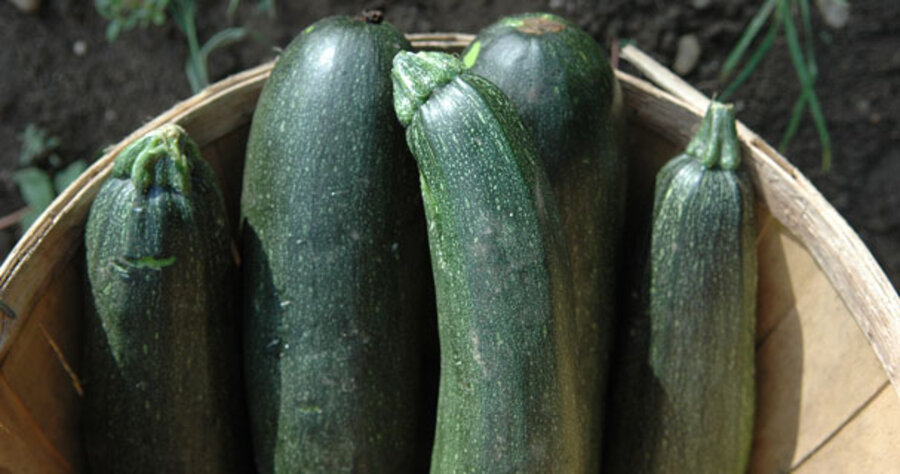Green light for zucchini
Loading...
It takes wildlife to raise squash. Well, at least that’s been the case in our neighborhood.
Already this spring the lettuce has been booming, and the tomato starts are growing taller – but the big test will be how much zucchini we can harvest.
Now, I realize that may seem a strange wish when, by fall, most gardeners are desperately trying to donate their “zucchinis of unusual size” to anyone who will take them.
But in my garden, squash, melon, and other cucurbitaceae seedlings had generally been the slugs’ and snails’ food of choice, so they didn’t often make it to maturity.
But all that changed last year, when we discovered the ecology of zucchini.
It was actually the hawk in the birdbath and the falcon on top of the beehive that tipped us off.
They were hunting in our city backyard, and while that didn’t seem a happy thought for the resident families of squirrels, doves, and tree rats, to the ecologist in me it was a good sign that our generally organic (no herbicides or pesticides) garden and heavy mulching methods had helped reestablish a more balanced ecosystem.
Of course, there had been earlier signs; it just took us awhile to see the
animal-squash connection.
When we first moved in several years ago, we periodically heard nocturnal rustlings outside. We discovered that these came from a trio of raccoons looking for cat food left out and for grapes and blackberries that were ripening along the side fence.
We marveled that these raccoons had strayed several miles from their riparian habitat along the American River, but figured perhaps they lived part time on one of the larger brushy lots nearby.
Fortunately, they didn’t seem to want our numerous tomatoes, but neither did they appear to eat the abundant snails and slugs who subsisted on our squash seedlings. And the scrub jays, which had turned the lid of our kettle barbecue into a regular perch, apparently much preferred nuts to snails.
So, after a couple of years, we’d given up on growing zucchini or any of its relatives, realizing that the mollusks would just munch them down.
By then the raccoons had moved on, but we did have a family of opossums. We only rarely caught glimpses of them (since these marsupials seemed not to venture out much before midnight), but based on the cats’ and dogs’ tracking efforts, it appeared they lived under the old garden shed in the corner of our property.
Not wanting our latest wildlife cohabitants to become roadkill, my husband suggested feeding them in the yard. And so we started buying sacks of the almost-too-ripe-to-eat fruit on sale at the local grocery and leaving pieces out under the trees where they roamed.
What we didn’t know at the time, though, was that having them here would bring better ecological balance to our backyard by reducing our mollusk population and provide a safer haven for squash.
Opossums, we learned, do eat snails and slugs. So last year we set out cucumber seedlings, and we were thrilled when they survived and thrived. This year (unless the opossums develop new cravings and the hawks go vegan), we’ll be nurturing and harvesting many more cukes for summer salads and “zukes” for sautés and breads.
But in any case, I know there’s more than enough squash out there somewhere for all of us to enjoy – even the snails and slugs.





